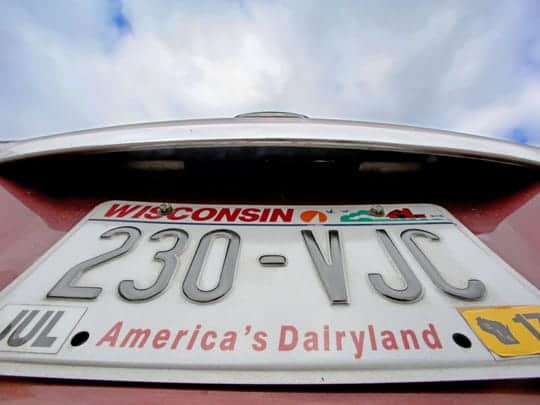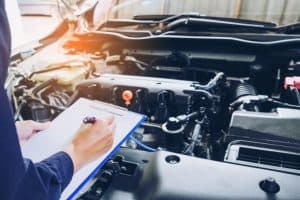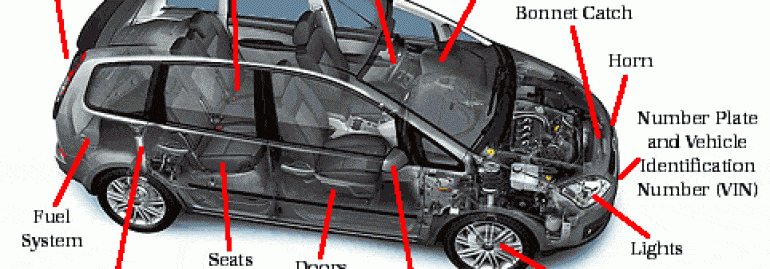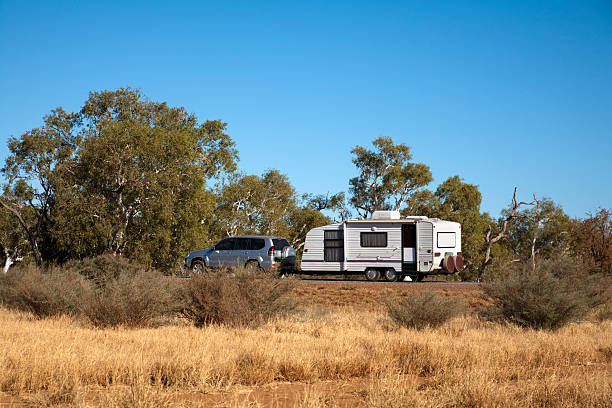
For most people, their very first car was or is usually a used car. Acquiring used cars not only saves you a significant amount of money, but it also allows you to own luxury vehicles that are otherwise costly if purchased back when they were new. But there’s a catch, unlike a brand new car, it doesn’t come ready to be driven.
Buying a used car entails much more than finding someone who is selling their car, giving them money for it, and driving home with the vehicle. In addition to the transfer of funds, there is the title transfer, registration, insurance, inspection, and more. If you are feeling rather clueless about what to do after buying a used car, this article will serve as an excellent guide.
In this article, we will cover the question: what to do after buying a used car, follow along!
What to Do After Buying a Used Car: Do this!
Title Transfer and Registration

You cannot legally drive on public roads if your “new” car is not properly registered with your local Department of Motor Vehicles (DMV). However, if you buy a used car from a dealer, they will generally help you with all of the DMV paperwork and the fees. Doing so ensures you at least have a temporary registration before you drive the vehicle off of the dealership parking lot.
In some states, you can complete the entire registration process and get your permanent (metal) plates at the dealer. Others will file the registration paperwork for you, in which case, you will receive the tags in the mail some 2-3 weeks later. In the meantime, they issue you a paper license plate to display in your front or rear window. Nonetheless, some dealerships will require you to go to the DMV and finalize the process yourself.
One can also buy a used car from a private seller. If this is the route you decide to take, you will have to make the trip to the DMV to complete the car title transfer and registration. You should also prepare to part with several hundred dollars for the entire process. Each state is different so check your local laws or DMV requirements.
Warning: you CAN get a ticket from local law enforcement while driving your car home from a public or private purchase if you do not have the appropriate license, registration, and insurance in or on your vehicle.
Bonus Tip: many states offer a “temporary plate” or permit that will cover 1-3 days of driving without official plates. You can purchase it on the DMV website. These can be printed out and placed inside the front or back window of the car until you perform the proper paperwork.
To register your car, you will need:
- Your name on the title or loan documents if you acquired the car through a car finance company and the car dealer is holding on to the title.
- Proof of insurance on the vehicle you purchased (call an insurance company and have them email you proof or have it faxed to the car dealership before you leave)
- A vehicle inspection report (check local laws)
- Completed emissions test (check local laws)
- Multiple forms of identification, including one government-issued photo ID
- Proof of address, such as a household utility bill or bank statement
If you are financing the car, the lender or dealer holds on to the original title until the loan is paid off in full. Your name should appear on the title as the co-owner. The finance company has its name on the title and listed as a lienholder. The lienholder’s name only gets removed from the title after you have paid off the entire loan. Once the loan is paid off, the title is transferred solely to your name and a new original title is mailed to you. If you make an outright purchase, the dealer usually handles all DMV paperwork for the title transfer and you get the original title.
However, some dealers and private sellers leave the paperwork to you, which will require you to go to the DMV. You will need a copy of the original title to take to the DMV. This copy has you and the lienholder listed as co-owners. This tells the state that there is another owner besides yourself.
This also protects the lienholder against you trying to sell the car without their knowledge. You wouldn’t buy a used car in a private sale that has a lienholder already on the title. The lienholder could come to take the car from you as they are the rightful co-owner, should there be any outstanding balance on the original car loan.
Title transfer is necessary after you completely pay off your loan because as long as the title remains in the seller’s name, he/she technically remains the car’s co-owner. What this essentially means is, you need a car title in your name only to be the only legal owner. Most finance companies require full coverage car insurance during the life of the loan. This protects them should you get into a car accident. Full-coverage insurance costs a lot more than limited liability insurance. Once you pay off the loan, you can get limited liability insurance which saves you money. But you cannot do this until the loan is paid off and you get the title only in your name.
To transfer the title, you will need:
- The current title if the car was previously owned and titled, i.e., a used car
- A completed bill of sale. It legally protects the buyer, that is you, as it is proof of purchase
- Odometer disclosure for vehicles less than ten years old
- Smog certification (check local laws)
- Transfer fees paid for by you, the buyer
- A completed damage disclosure statement
Each state has specific vehicle registration and title transfer requirements, fees, and taxes. Confirm these details by visiting your state’s DMV offices or from the DMV website. Once you get your registration information, you should always keep it in the car. Alternatively, remember to put it in the car whenever you drive.
Insurance

Auto insurance premiums are a huge factor in the cost of car ownership. Nonetheless, car insurance is a requirement in almost every state. New Hampshire and Virginia are the only two exemptions. Residents in these areas can drive immediately after receiving their registration information.
However, mandatory or not, it’s crucial to have car insurance before leaving the dealership. Most dealers won’t even allow you to drive off the lot without proof of insurance. Therefore, it’s a good idea to get the car’s vehicle identification number (VIN) beforehand and give it to your insurer so that you have proper coverage when you drive off the lot.
Talking to your insurer ahead of time also gives you an insight into the cost of various coverages such as collision, comprehensive, property liability, and bodily injury liability. Having this knowledge will help you to better budget for all your automotive expenses. Insurance should be part of the budget for car maintenance.
There are several car insurance coverage options, and depending on where you live, some of the coverages are mandatory. The cost for each varies based on the type of car you buy, its value, your age, your credit score, your driving record, where you live, how high the deductible is, et cetera. Most state laws require you have bodily injury liability and property damage liability coverage.
Maintenance and Repairs

Although some sellers will keep their cars in tip-top condition, others will drive for many miles without proper vehicle maintenance. Skipping a post-purchase inspection is, therefore, likely to cost you in the long run when worn components start to fail. So, take the car to a good mechanic after purchase to ensure it continues to perform well.
Bonus Tip: a reputable car dealership should allow you to have the vehicle inspected by your own mechanic prior to the purchase. For under $100, most automobile mechanic shops will inspect a vehicle for you and give you a list of the results. Consider this a great investment in buying a good vehicle.
Typical used-car service packages include:
Filter replacement
All filters, namely oil, transmission, air, and fuel filters should be replaced regardless of whether they appear to be in good condition.
Fluid check
The fluids in the used car you buy may need flushing, bleeding, or topping off. These fluids include brake fluid, motor oil, transmission fluid, power steering fluid, radiator coolant, and windshield washer fluid. You should also check for fluid leaks from any part. Having the fluids in your car checked and fixing any fluid leaks ASAP can help prevent systems failures.
Brake inspection
A properly operating brake system helps ensure safe vehicle operation and control under a variety of driving conditions. It can also be very costly to repair or replace rotors and brake pads. Therefore, changing the brake fluid is always recommended after purchasing a used car to avoid brake failure, brake squealing noises, and costly repairs.
Tire inspection
Checking your tire tread depth, sidewall surfaces, and air pressure can address any issues that may prevent your tires from performing at their safest capacity. Bald tires, or tires with little tread left on them, can lead to blowouts that leave you stranded. Make sure there is ample tread left and that it is evenly worn on the tire. Uneven wear could mean the tires are out of alignment or other issues.
Professional Cleaning
Buying a used vehicle necessitates a thorough cleaning of the car. After all, you wouldn’t want to drive around with a car filled with someone else’s dirt, filth, trash, and sweat, would you? So, for that car interior and exterior showroom shine, get your car professionally cleaned.
Negotiated Items
If you negotiated for other items besides the car, such as an oil change and an extended warranty, before making the purchase, ensure you have the promises in writing. Additionally, if you negotiated auto accessories like seat covers, floor mats, a stereo system, and window tint, make sure these items are either in the car, installed, or applied before taking the car home.
Remember, the dealer does not have to give you any items that weren’t promised or included in the paperwork. Therefore, for negotiated items, ensure you talk to the salesperson, dealer manager, or private seller before purchasing the car and then seal the promise in writing.
Read the Owner’s Manual
Granted, reading the manual is no fun. If anything, it is tedious and boring. Nevertheless, it helps in knowing the car’s maintenance schedule, what the ideal tire pressure is, how to use the various gizmos, the vehicle’s fuel capacity, et cetera. Following the vehicle maintenance schedule can help keep your car operating at peak performance, maintain or increase its resale value, and helps maintain reliability.
Without regular maintenance, the operating systems and other components of your vehicle will start to wear and fail prematurely, leading to the need for expensive repairs. You can do car care basics such as checking the level of oil, tire pressure, and washer fluid yourself in just a few minutes and at a minimal cost. However, some vehicle maintenance tasks require the work of licensed, trained auto repair specialists with special tools.
Customization
Now, while some people see their car merely as a convenient means of transportation for getting from point A to B, there are quite a number of those that want it to feel like their own. And what better way to achieve this other than adding personal touches. However, you may require professional help to actualize some of your ideas.
You can customize your car in various ways, including a custom paint job, private plates, custom car seat covers, new floor mats, dashboard upgrade, reversing camera installation, Bluetooth hands-free car kit installation, wheel customization, and so on. Make sure the modifications you make are in line with the standards and guidelines for legal car modifications in your state.
Learn about the Car’s Inherent Automotive Problems

Learning what could go wrong with the car you’ve purchased is probably something you should do before money changes hands. Hindsight is 20/20, as the saying goes, but you would rather find out before the purchase. Finding out what car parts are likely to fail on that specific automobile will give you insight into what to listen and look for as you operate it. It will also give you an idea of what you can expect to spend on the car in the future.
Your research may show that serious inherent issues exist, like in the case of the older Cadillac, with a 3.6 L V-6 engine that was known for timing belt problems. Therefore, if you owned this vehicle long enough, it would eventually need a timing chain replacement. The same goes for an automobile with known transmission issues. In either one of these situations, buying an extended warranty that covers major engine and transmission problems would be a wise move.
How to learn about inherent automotive problems
You can learn about these specific automobile problems in various ways, including:
- Typing your car’s year of manufacture, make, and model followed by the word problems into a standard search engine. The results that appear on the first three pages should contain a wealth of information on the topic.
- Accessing and viewing automotive data collection websites. Some of these businesses specialize in certain automobiles and will offer an impressive level of expertise. Others will even give you price estimates for the repairs of the common problems they identify, which is valuable information for when you are creating a budget.
- Becoming a member of social media groups of car owners with the same car make and model as you. Join any such groups and, among other topics, enquire what problems your model year is likely to have. The feedback you receive will be first-hand information, therefore fairly accurate, since these are people who have the same car as you, but more experience operating it.
Benefits of Buying a Used Car
A used car does not necessarily mean it is an overpriced clunker with rusted rims and chipped paint. Sure, there are jalopies out there for sale, but many used car dealerships are full of certified new-looking vehicles. Buying a used car comes with various benefits, such as:
A lower price tag
Used cars cost significantly lower than new ones. The price gap between new and 3-year-old used vehicles was 62% in 2018, amounting to more than $14,000 in savings on average, according to Edmunds. Therefore, paying off a pre-owned car would be much faster, saving you financing fees.
The bulk of the depreciation has already occurred
You have probably heard that a new car loses thousands of dollars in value the moment you drive it off of the car dealership lot. Well, it’s true. The worth of a new vehicle can drop 11% on the drive home from the dealership, meaning your $25,000 brand new vehicle is only worth $22,250 once it leaves the dealership lot.
It doesn’t end there. The vehicle continues to depreciate as weeks, months, and years pass, with some new cars, losing as much as 40% of their value during the first year. On the other hand, there’s no depreciation hit the second you roll off the lot with a used car. And while a used car will still depreciate, it will lose value less quickly.
Note: When a car depreciates quickly, it heightens the need for GAP coverage, which is an added expense. GAP coverage is optional insurance coverage for the difference between the amount you owe on your car and the car’s actual cash value (ACV) in the event of an accident. This is another reason you should call your insurance company before buying a used car. Find out what the value they give to the car and compare it to the value the seller is claiming.
No exaggerated fees
Dealers bombard new car buyers with hidden, crazy fees such as processing, shipping, destination, dealer preparation, and advertising fees. These fees can add up to hundreds of dollars! You can avoid many of these random fees by purchasing from a private seller.
Cheaper features
Dealers tend to install expensive add-ons, which new car buyers can get from an after-market installer at a much lower cost. A used car may not come with all the features you’d like, but you certainly won’t end up paying for things you didn’t ask for. Plus, for features you want, having them installed will cost less than it would on a new car.
Lower registration fees
In most states, the rate of your annual registration fee depends on your car’s value and its model year. It is usually highest in the first three years and then it levels off after five years. If your state has similar rules, buying a car that is at least three years old can save you about a thousand dollars by avoiding the new car registration fees.
Finally, enjoy your new car. Go on road trips, personalize it, and remember to read the owner’s manual so that you can keep the vehicle well maintained. Hope you found the: What to Do After Buying a Used Car article helpful!
If you liked this article make sure to check out: can you drive with a blown head gasket and Uber Car Types








